Root vegetables aren’t the prettiest veggies in the patch, but they’re very easy and rewarding to grow. Carrots, beets, rutabagas, and other root veggies are extremely versatile to use in recipes, and some tasty tubers come topped with leafy greens. Root vegetables may be taproots (parsnips, radishes), tuberous roots or stems (sweet and regular potatoes), bulbs (onions, garlic), or corms (celery root). All of them stay firm and flavorful for a long time when placed in a paper or plastic bag and stored in the crisper. I’ve included 15 of my favorites in this root vegetables list with tips for growing and using them.

Root Vegetables List
1. Carrots (Daucus carota subsp. sativus)
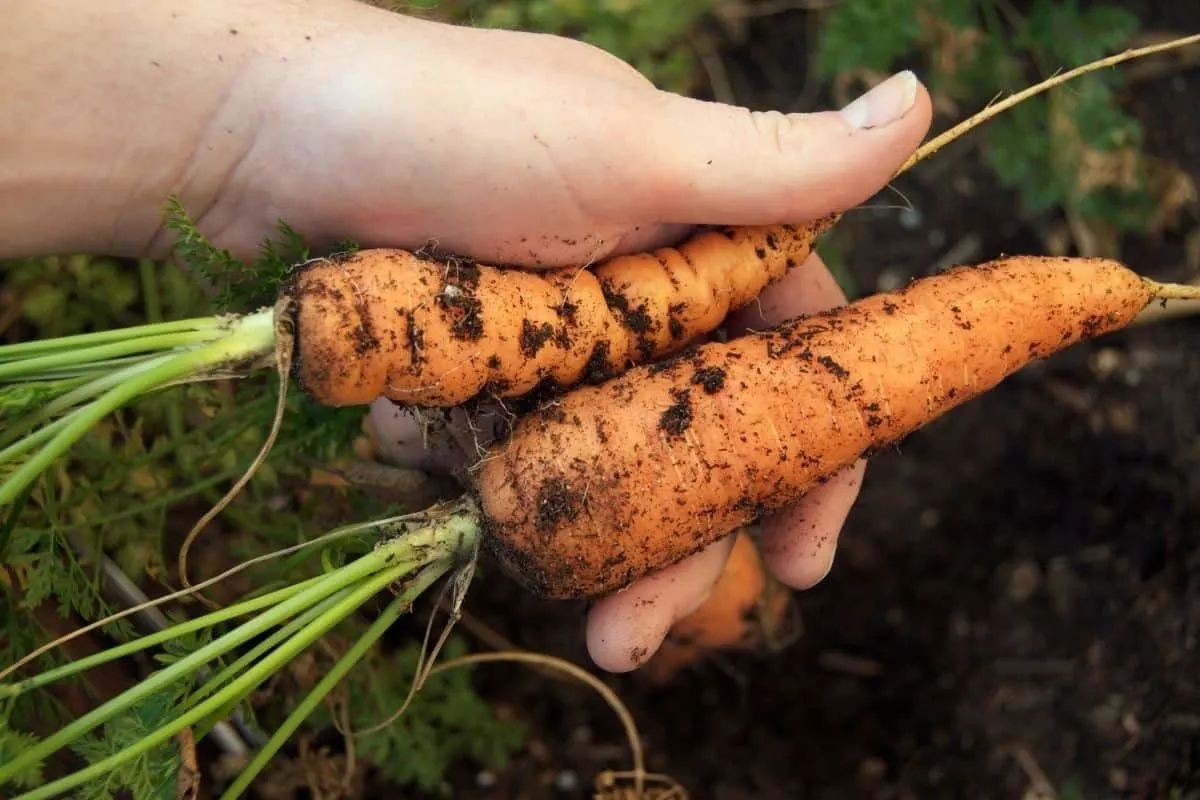
Zones 3-10
Carrots are naturally sweet and lots of fun to grow. Mine almost never look like the ones in the grocery store, but that’s okay, I get a kick out of their funny shapes.
Orange carrots are the most usual, but did you know carrots come in a rainbow of colors?
Make sure to rake the soil so that it’s nice and loose before planting the seeds. Work some sand into the soil if it’s thick or compacted. Keep in mind that carrots don’t transfer well, so plan carefully before planting. And plant them where they’ll get full to partial sun. Learn more about growing carrots.
I use carrots in stews, soups, casseroles…you name it. They’re also delicious served fresh and raw as crispy sticks for a dip. But my favorite way to eat carrots is yummy carrot cake with cream cheese frosting. Not the healthiest snack, but I console myself with the fact that carrots are high in carotene, vitamin K1, potassium, and antioxidants.
2. Radishes (Raphanus sativus)
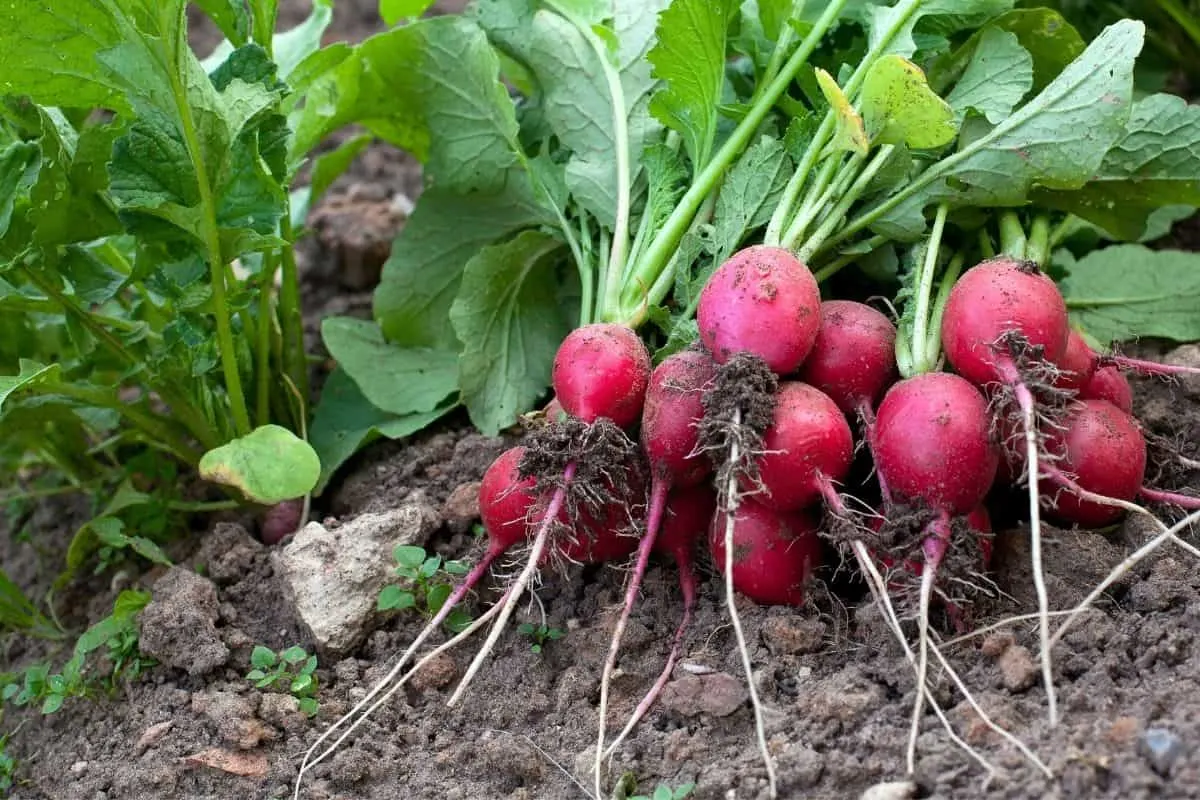
Zones 2-9
The thing I love most about growing radishes is how easy it is to start from seeds. Plus, they’ll be ready to harvest in a month or less. That makes it possible to have a fresh batch coming all summer. Just don’t let them get past their prime, or they won’t be as tasty.
Plant them in well-drained soil with average fertility and in partial to full sun.
Raw radishes add flavor and crunch to chicken salad. Or try them oven-roasted and buttered as a replacement for potatoes to lower your carb count for weight loss. They’re chock full of calcium, potassium, and natural nitrates that improve flow in blood vessels.
3. Parsnips (Pastinaca sativa)
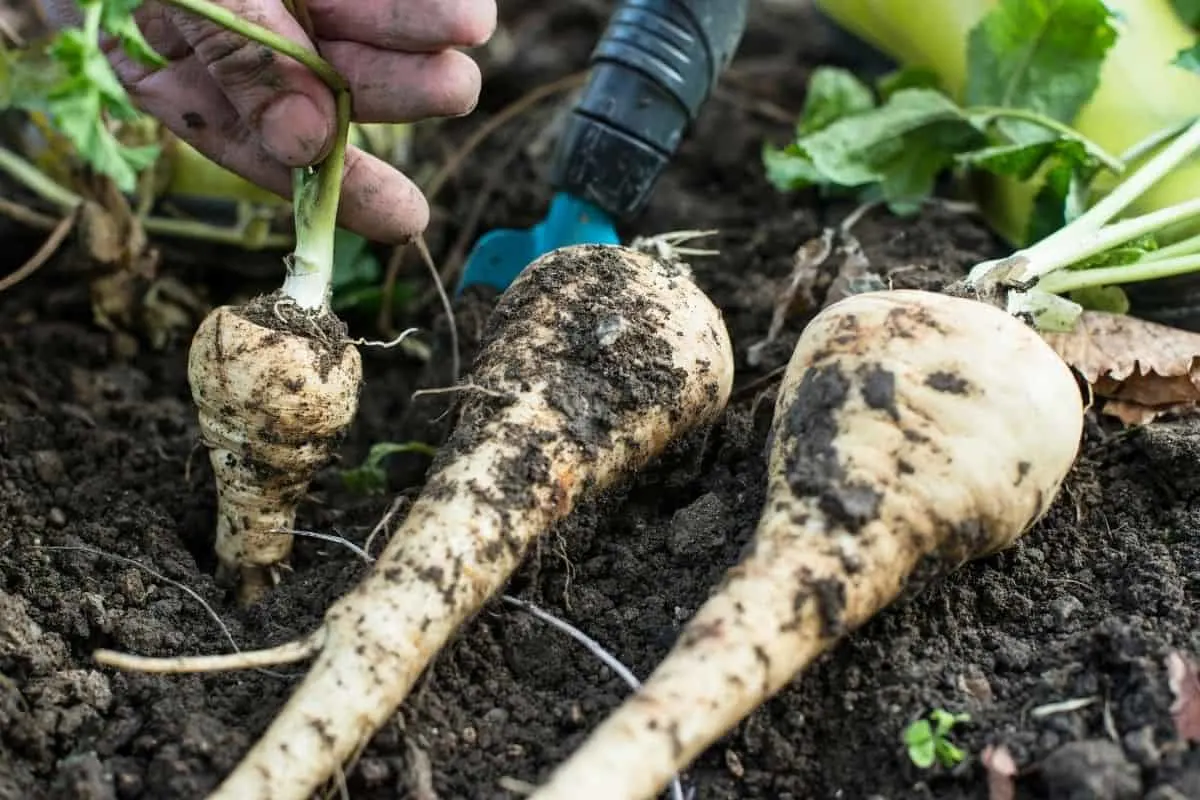
Zones 2-9
The carrots’ cousin parsnips take a while to grow, so plant them in early spring in time for Thanksgiving dinner. Fortunately, they’re hardy enough to survive a few light touches of frost. In fact, that will help them taste better.
Turn the soil 12 inches deep as soon as it’s workable and add a 4-inch layer of compost. Place two seeds 1/2 inch deep. Seedlings should emerge in two to three weeks.
They prefer full sun but will tolerate some shade.
The taste of parsnips is worth the long wait. Some varieties have a nutty flavor while others are sweet. They can be eaten raw or mashed like potatoes. My favorite way to eat them is roasted with plenty of butter and seasonings. YUM!
4. Horseradish (Armoracia rusticana)
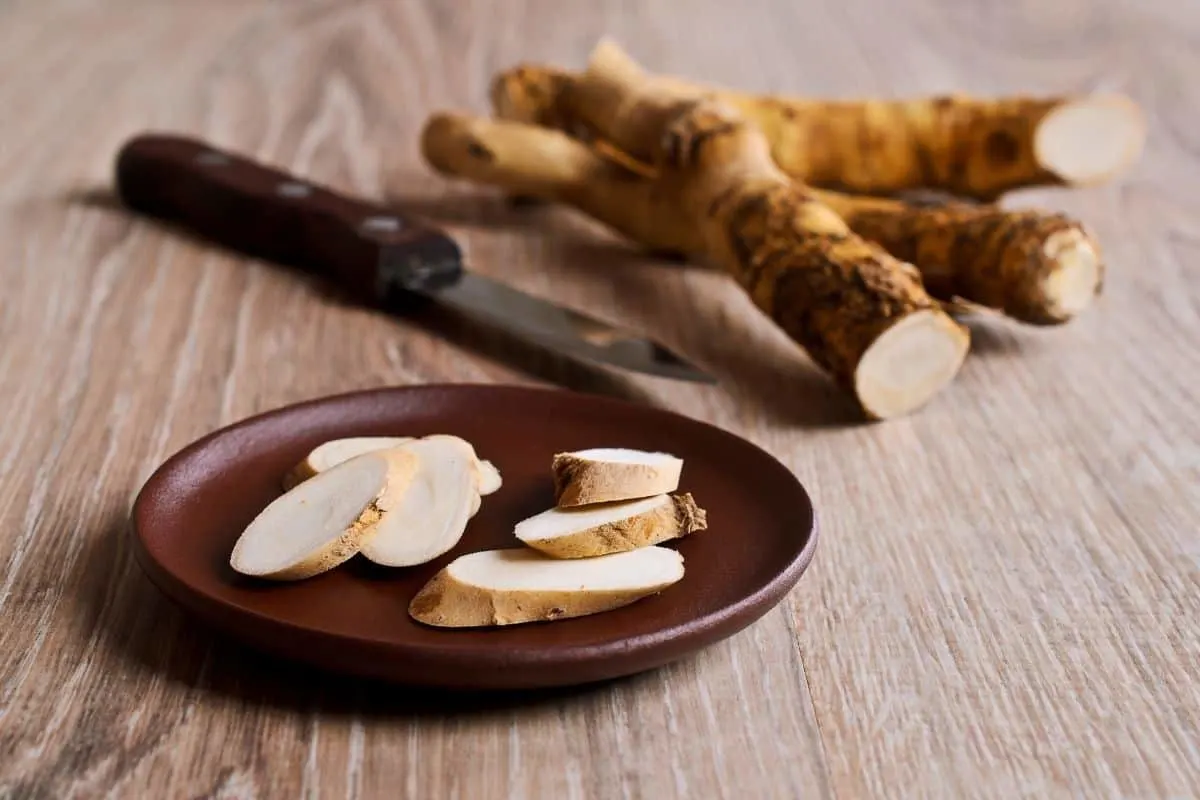
Zones 3-6
I suppose horses eat radishes, but I’m not sure that’s how this perennial herb got its name. This spicy root is easy to grow and is quite prolific, perhaps because it’s virtually pest and disease resistant. Watch out that it doesn’t take over other plants.
Horseradish is grown from root segments or potted nursery plants. A root left in the ground will regrow, and you can also grow horseradish in pots. Plant it in the spring in loose, nitrogen-rich soil and it will be ready by fall. Make sure it gets full to partial sun.
Horseradish is used in creams and sauces for gourmet cooking. Add a little in ketchup for a simple cocktail sauce.
5. Beets (Beta vulgaris)
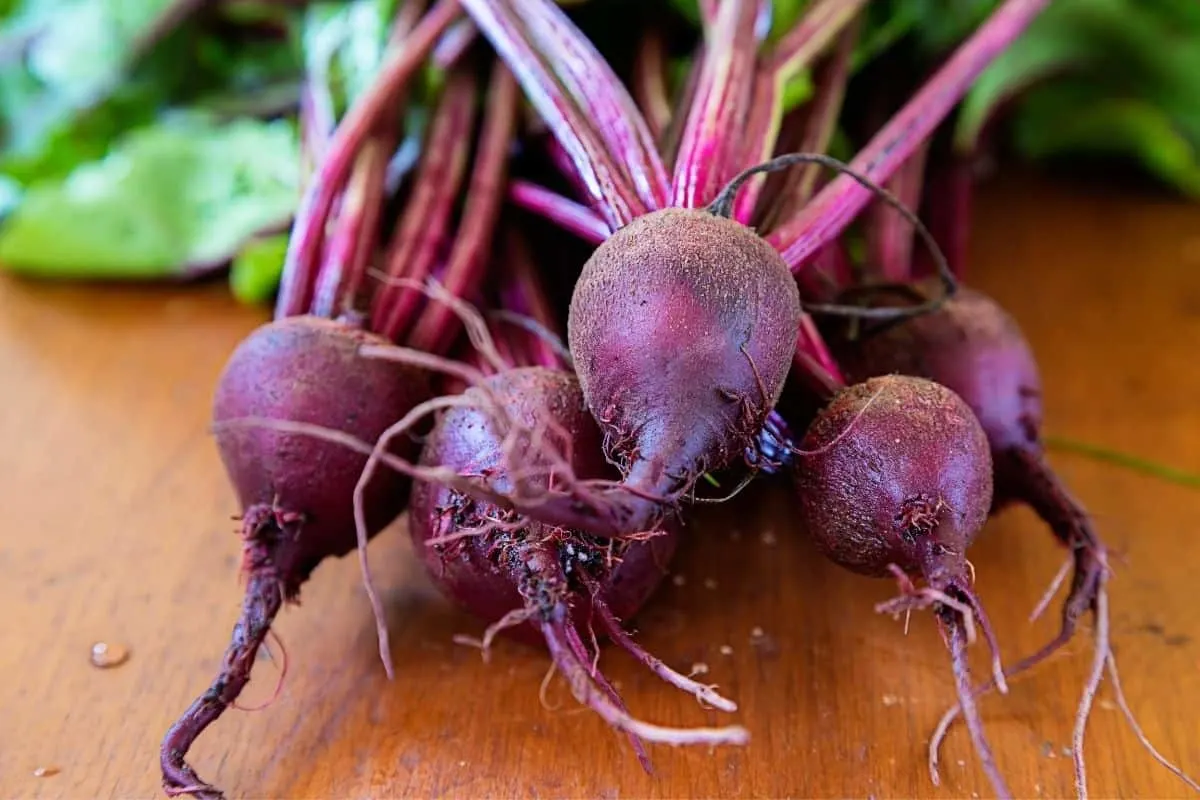
Zones 2-11
Beets are another easy-to-grow root veggie. Plant the seeds in rich soil in spring. They can take up to a week to germinate. Keep the soil moist during this period.
Thin out any extra seedlings (you can eat them). They prefer full sun for the best color and flavor. Give them about an inch of water per week. If you want more details, here’s how to grow beets from seed.
While the red beets are more popular, golden beets, with their sweet flavor, make a great addition to your dishes.
Beets are good for your digestive system, lowers blood pressure, and helps fight infections.
Use beets in soups, borschts, or pickle them. I like adding beets to kabobs for the grill. You can also eat the leaves, making them entirely edible plants. Check out these beet recipes.
6. Turnips (Brassica rapa)
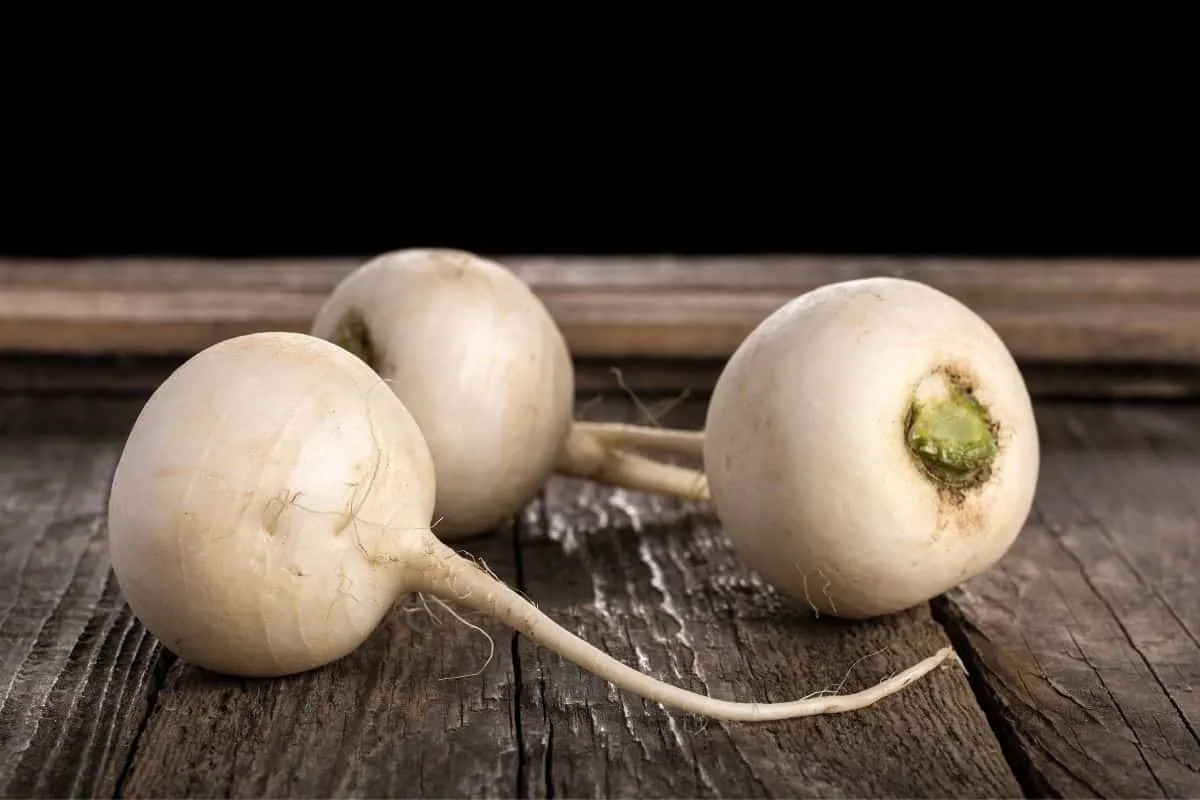
Zones 2-9
Most people are more familiar with purple and white turnips about the size of a tennis ball, but they come in several other varieties. You can find small golden turnips and bright red ones.
Turnips don’t do well in heat, so they’re an excellent root veggie for cooler climates. Plant the seeds towards the end of summer for a fall crop. They’ll be more flavorful if they experience a light frost. They like sandy, well-drained soil that is slightly acidic and partial to full sun.
Prepare turnips as you would potatoes: baked, broiled, or in soups. I’ve even used turnips in stir-fries. The tops can also be cooked. The greens are similar to mustard greens.
7. Potatoes (Solanum tuberosum)
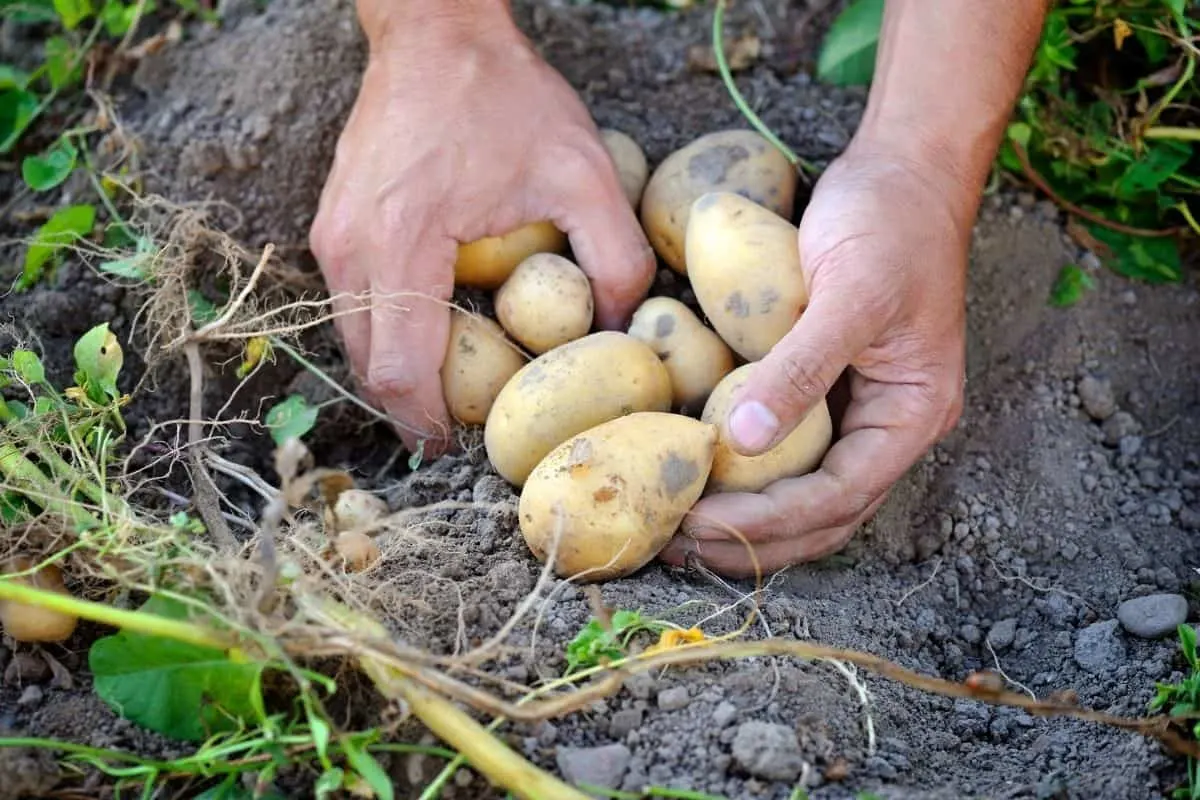
Zones 1-7
Potatoes, a popular root vegetable, are an exception in the United States. Because of disease and pests, they’re grown as annuals, but technically, they’re perennials. They aren’t terribly hard to grow, but you do need a little know-how or they’ll turn out bitter.
Dig little trenches and plant potato segments “eyes” up in hilled rows. Cover with a few inches of well-drained, acidic soil. Plant them where they’ll get full sun. Here’s all you need to know about growing potatoes.
Potatoes are a winter crop in warm climates and can be planted in spring before the last frost in colder climates.
They can be prepared in endless ways, including my favorite, French fries. I use olive oil for frying them. It makes them a healthier dish :P.
If you grow a lot of potatoes, you’ll love how to store potatoes to keep them fresh long term.
8. Sweet potatoes (Ipomoea batatas)
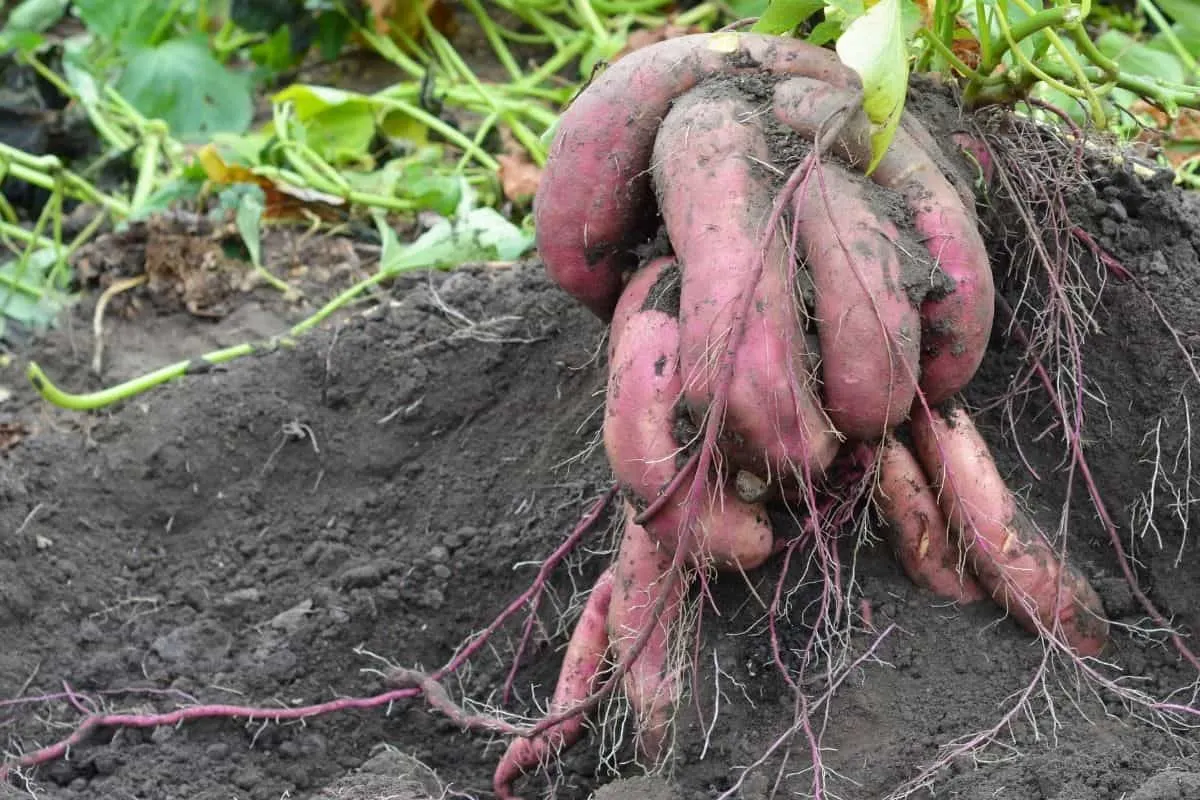
Zones 10-12
Sweet potatoes are tuberous roots grown from little shoots off of the mature potatoes called slips. Get them at a garden center or online.
They don’t do well in cool climates because they require four months to grow. Northern gardeners can plant sweet potatoes in containers and replant them outside when the soil has warmed.
Sweet potatoes need well-drained, slightly acidic soil. Make sure the soil is loose so the tubers have room to spread out. Plant them in full sun, and water deeply during dry spells. Here’s more information about growing sweet potatoes.
Sweet potatoes are loaded with vitamins a and c, beta carotene, and potassium. Bake sweet potatoes or use them in casseroles with sweet and savory spices like cinnamon and ginger and sweetened with maple syrup. Delicious!
9. Rutabagas (Brassica napobrassica)
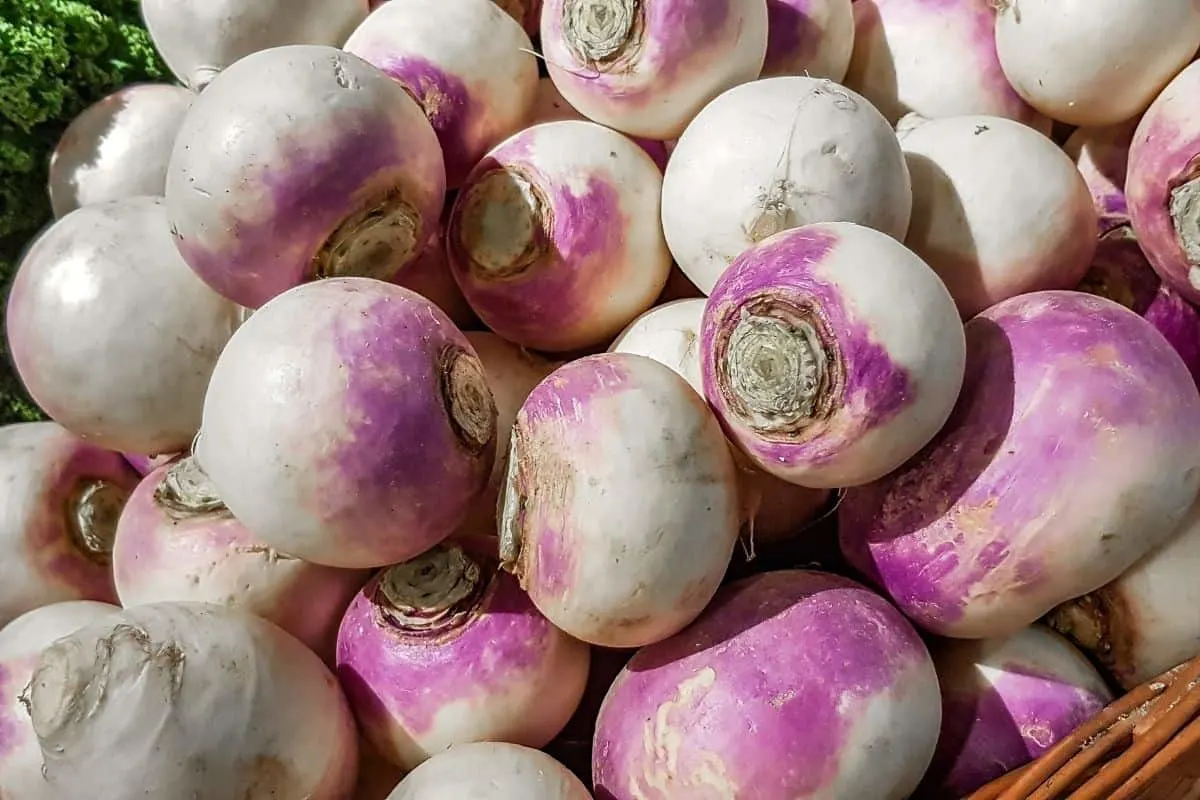
Zones 3-9
Similar to turnips, rutabagas are bitter when raw but they cook up savory-sweet. They’re easy to grow, don’t require much space, and have very few pest problems.
They need a growing season of at least 90 days, so sow seeds early if you have a short planting season. Like several other root veggies, they’re tastier after a frost or two.
Rutabagas like fertile, slightly acidic soil and partial to full sun. Leave them in the ground until September or October.
Serve rutabagas mashed or roasted. My favorite? Rutabaga pie, of course.
10. Ginger (Zingiber officinale)
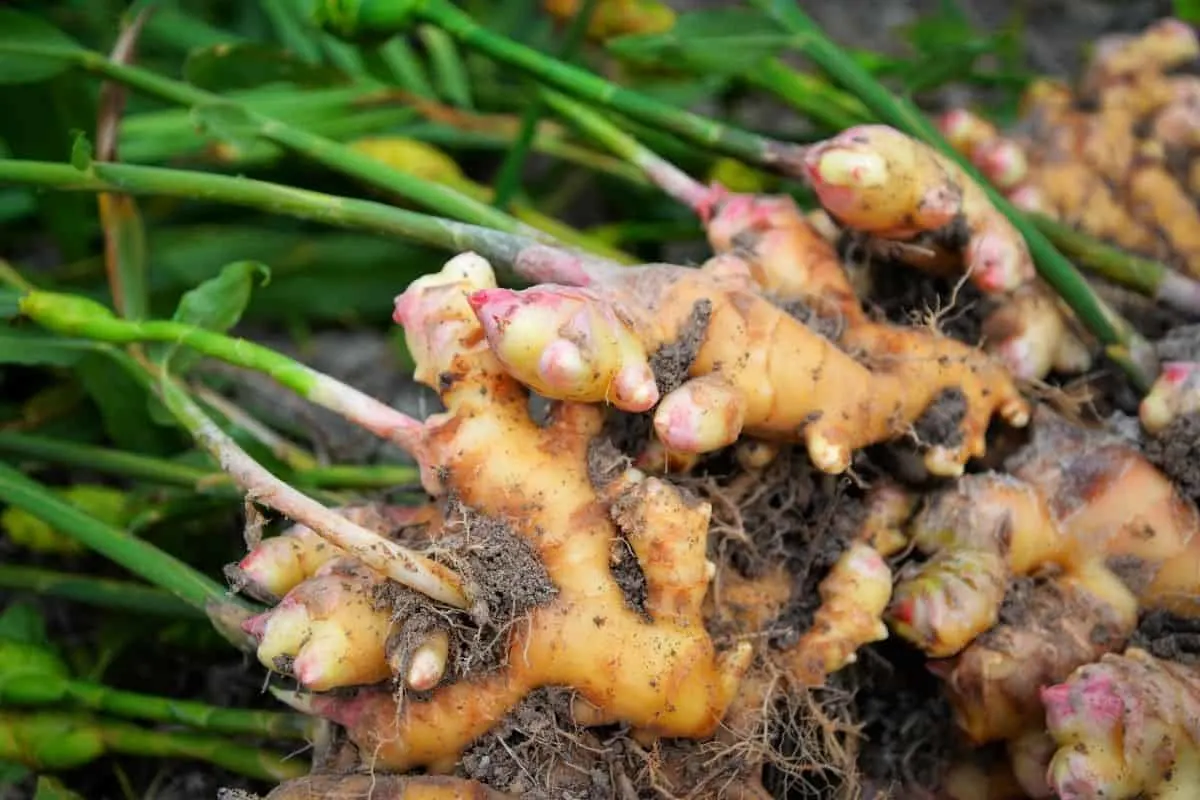
Zones 9-12
Ginger is a spice that is actually a root vegetable. It’s a tropical plant better suited to the warmth and humidity of states such as Florida, Hawaii, and southern Texas. However, in colder climates, you can grow ginger in containers using organic soil.
Grow ginger from pieces you get at the grocery store. Make sure the pieces have at least one eye and soak them in water overnight to remove any growth inhibitor spray.
You can also plant ginger in the ground and dig up the rhizomes when the weather gets cold. Keep them in pots until spring and replant them in the spring outdoors.
11. Onions (Allium cepa)
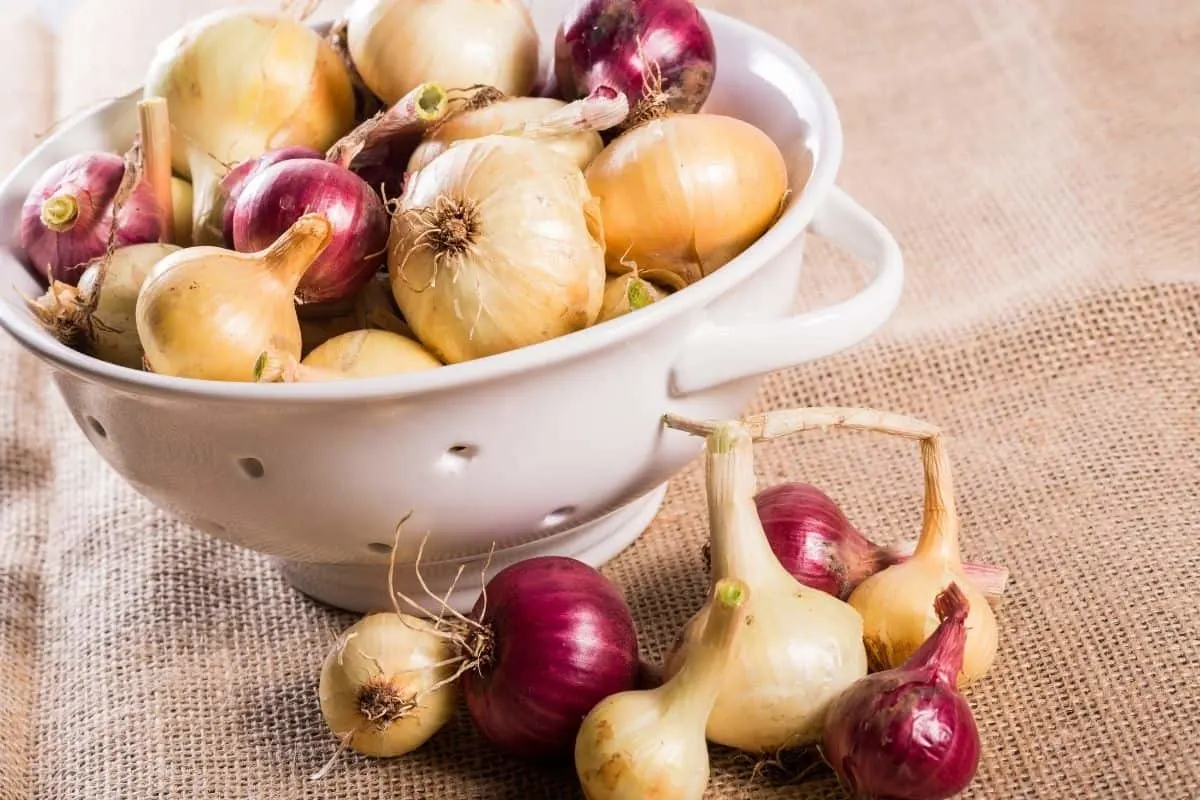
Zones 5-7
Onions are a must-have vegetable in every garden (and in every pantry). One of the easiest to grow (check out how to grow onions), it makes food taste a lot better. Onions are a staple at our house and most of the food I cook contains onions.
Three are many types of onions, so you can choose the ones you like best:
- green onions are great in salads and for garnishes
- the red onion, perfect for sandwiches, salads, and salsas
- yellow onions are the best for caramelizing
- white onions add flavor to soups, sauces, and stews
- sweet onions are milder, so if you don’t like the strong taste of the others, give this one a try
12. Celeriac (Apium graveolens var. rapaceum)
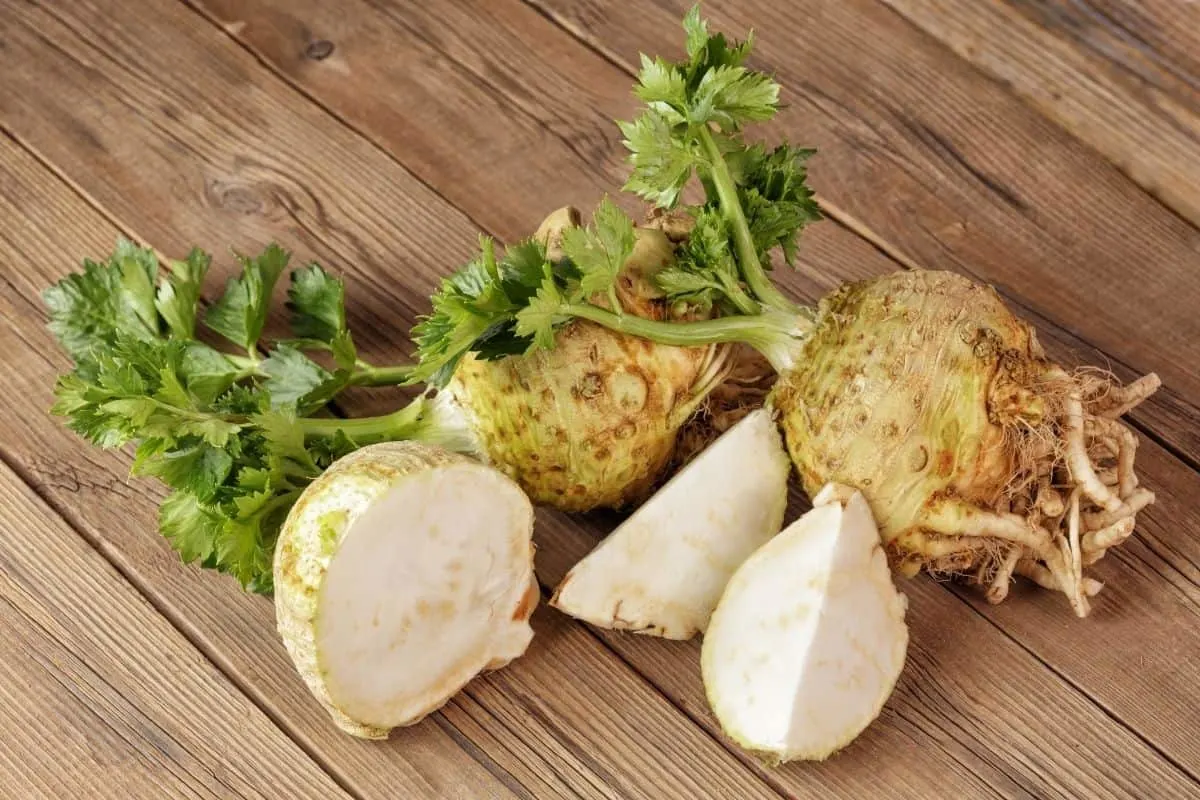
Zones 7-10
Celeriac is a fascinating vegetable to grow. It is technically celery root, so you would plant it exactly the same way you would any other root crop – in rows where the plants are spaced two feet apart, with about 18 inches between the rows.
While not very popular in the US, it’s widely used in Europe. We ate it all the time while I was growing up in Romania. We used the leaves for tomato soup and the root for celeriac salad (grated celeriac and carrots, oil, salt, and some lemon juice (I’ll write my full recipe here soon).
13. Kohlrabi (Brassica oleracea Gongylodes Group)
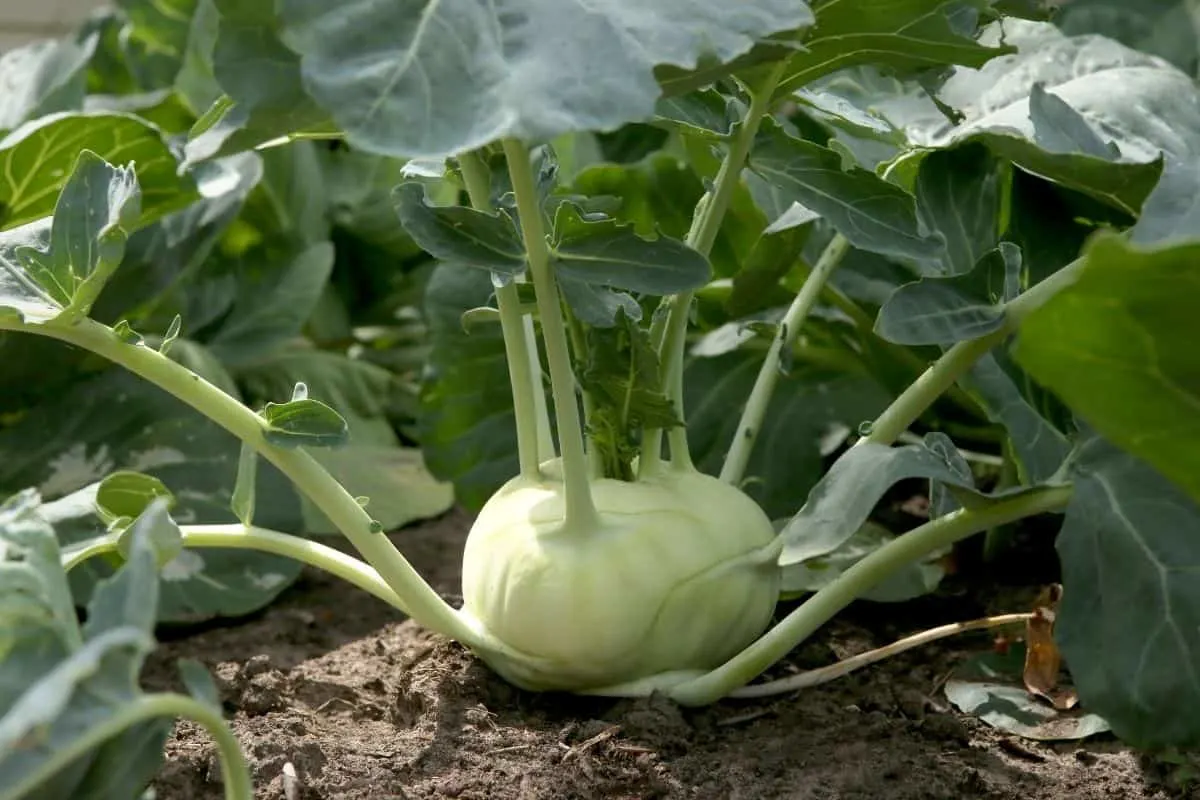
Zones 7-11
Kohlrabi is a vegetable that tastes similar to cabbage. It’s green on the outside and white on the inside, similar to an old-school turnip.
The kohlrabi looks like a turnip with leaves sprouting out of it. It has thin roots and long stalks that can grow up to three feet in length.
The taste is very mild and can be used raw or cooked. My husband loves them raw, but most people eat them cooked – they are tasty stir fried, simmered in soup, or sautéed as an accompaniment to meat dishes.
14. Garlic (Allium sativum)
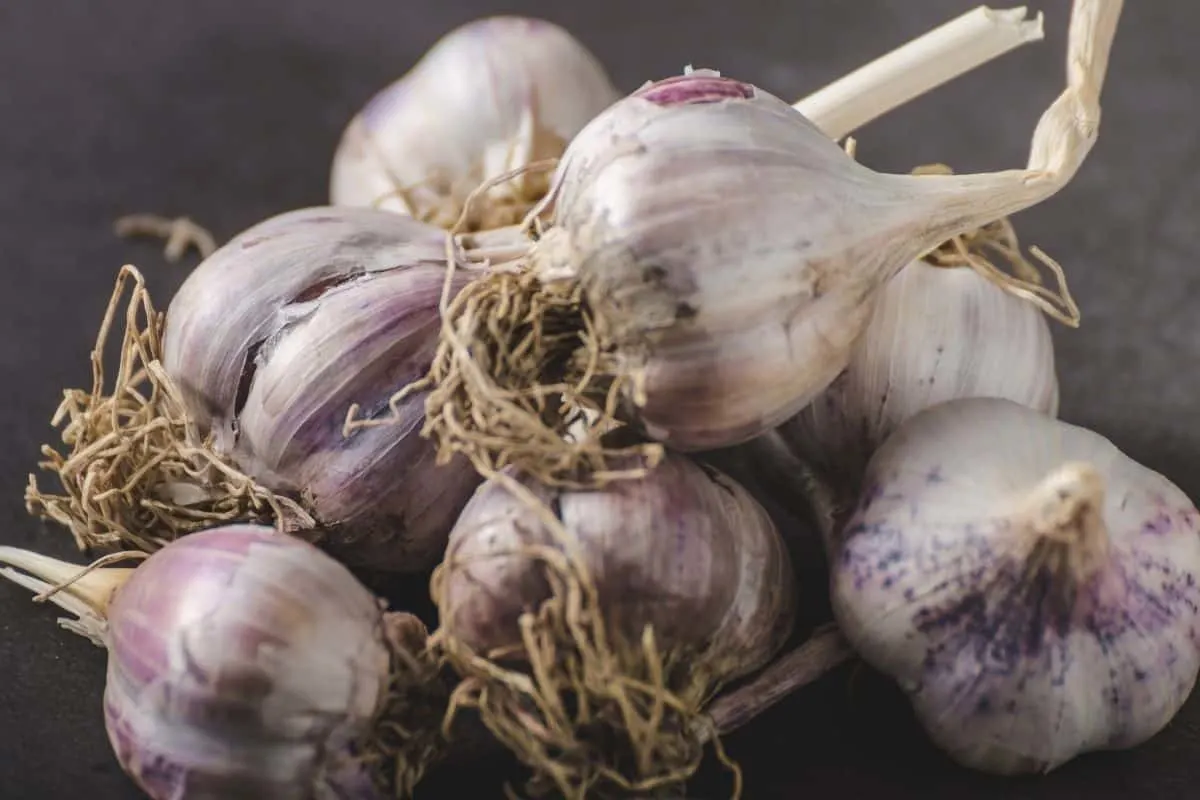
Zones 1-5
Garlic is one of the easiest root veggies to grow. Plant the healthiest-looking garlic cloves in loose, fertile soil. Learn more about growing garlic.
While the strong taste and smell of garlic might make you think twice about eating some before going on a date or a business meeting, don’t dismiss garlic. It’s good for you (benefits of eating garlic) and tastes soo good! Here are just a few ways to use garlic:
- roasted garlic makes a delicious bread spread
- spice up your omelet by adding some finely chopped cooked garlic
- make garlic soup
- add it to stir-fries
- make your own garlic powder
- add it to roasted veggies
15. Fennel (Foeniculum vulgare)
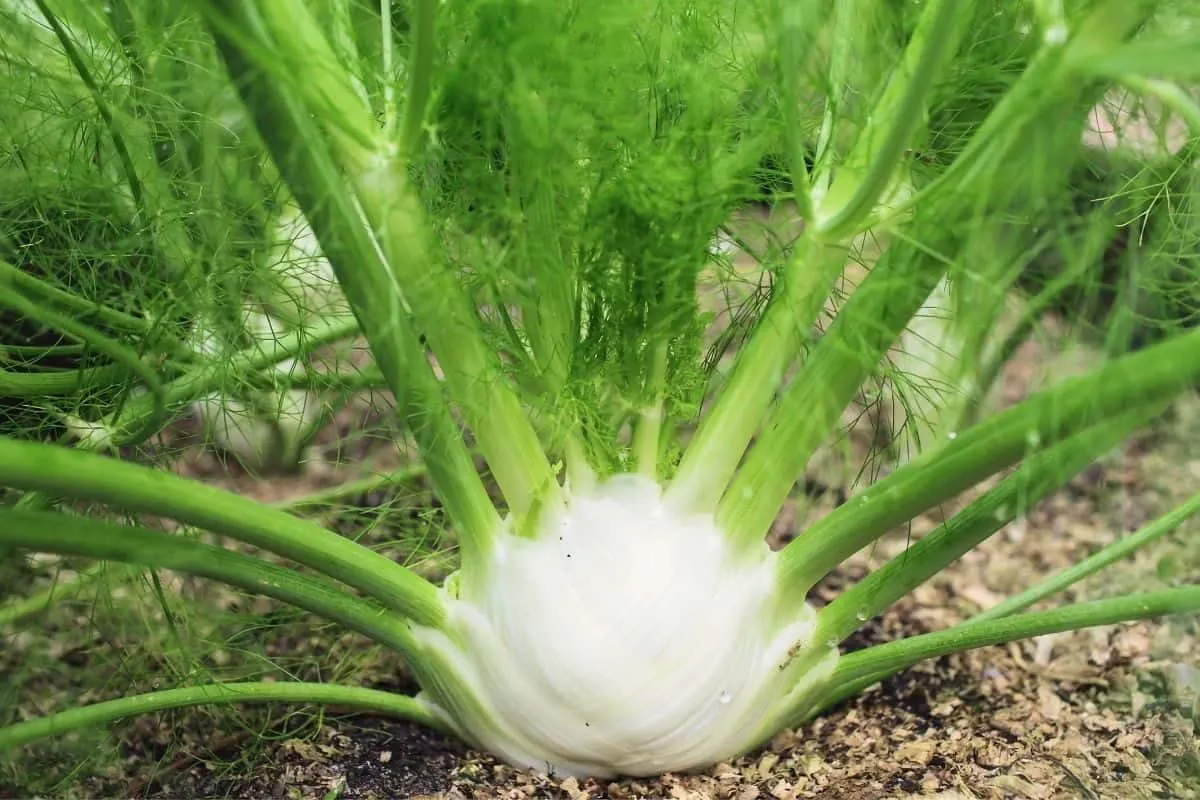
Zones 4-9
Fennel is a perennial plant in the carrot family that produces seeds like dill (looks a lot like dill too!).
Fennel is a tasty, versatile vegetable that can be eaten raw or cooked. Raw fennel adds a sweet licorice flavor and crunchy texture to salads while cooking it mellows the taste somewhat but gives an earthier depth of flavor.
More root vegetables
The above are just a few of the root veggies you can grow in your garden. I hope you’ll be inspired to try a new root vegetable you’ve never grown before.
Here are a few more root vegetables:
- Burdock root
- Yucca
- Salsify
- Fennel
- Turmeric
- Jerusalem artichokes
Benefits of Growing Perennial Vegetables
If you like using root vegetables in your cooking, you might want to plant a few that are perennials: plants them once and harvest them for years to come.
Not sure which root veggies are perennials? Here are a just few:
- American groundnuts (Apios americana)
- Chinese artichokes (Stachys affinis)
- Egyptian walking onions (Allium x proliferum)
- Sunchokes (Helianthus tuberosus)
So, why plant perennial vegetables?
- they’re as easy to grow as annuals and just as flavorful
- more resistant to pests, weeds, disease, and drought than other veggies
- they prolong the harvesting season
- improve the soil since you’re unlikely to disturb it as often as with planting annuals
In conclusion, with this list of root vegetables in your hands, and knowing that they are flavorful, nutritious, and easy to grow, pick a few favorites and start growing them soon. And since you probably can’t grow them all, see if your local farmer’s market has some you can try. You might find one that you must plant in your own garden.
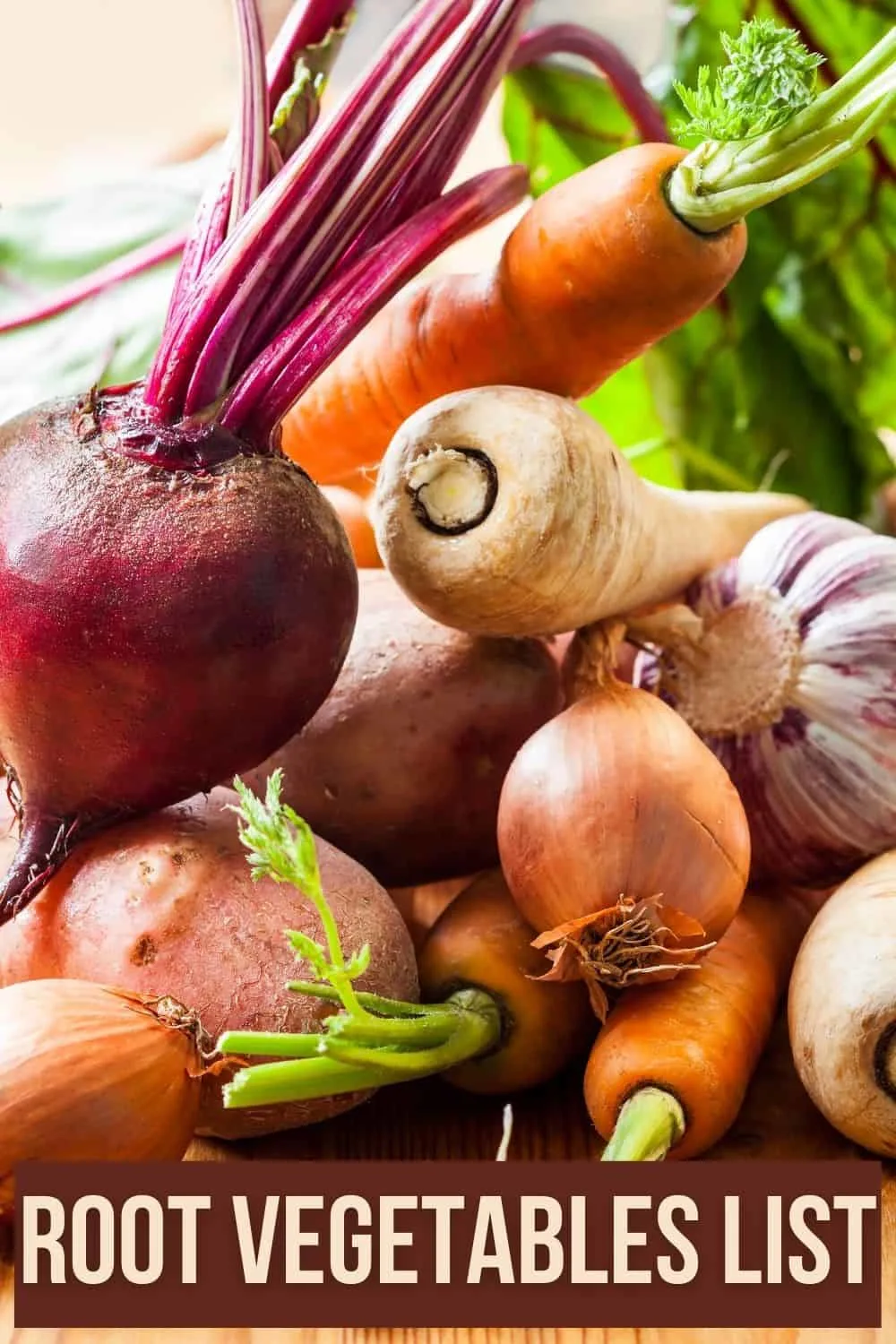

Planting a Kidney Friendly Garden - Renal Diet HQ
Wednesday 10th of May 2023
[…] minimal gardening tools, but the soil preparation and container planting is also relatively easy. Root vegetables like potatoes, carrots, radishes, beets and turnips are not only hardy and pest-resi…, they’re packed with vitamins that help support healthy kidney […]
11 Best Winter Garden Plants To Grow This Year
Tuesday 27th of December 2022
[…] a list of 15 root vegetables with […]
8 Best Companion Plants For Squash (And 4 To Avoid)
Wednesday 21st of December 2022
[…] the exception of radishes, root vegetables should not typically be grown near squash. The bulbous roots and tubers of beets and other root […]
What To Do With Beets: 12 Tasty Ways To Enjoy Them
Monday 29th of August 2022
[…] you grow beets (also known as beetroot), you probably know that this root vegetable comes in a variety of colors, including red, purple, and yellow. Beets have a sweet, slightly […]
Are Cilantro Flowers Edible? 5 Delicious Ways To Use Cilantro Blooms
Sunday 21st of August 2022
[…] We have heard of garlic butter and parsley butter, but the possibilities don’t end there. You can add any herbs and edible flowers, such as cilantro, to the butter for a bread table. It paints a beautiful picture and adds extra flavor to your bread. These flavored butters could also pair well with potatoes and other root vegetables. […]